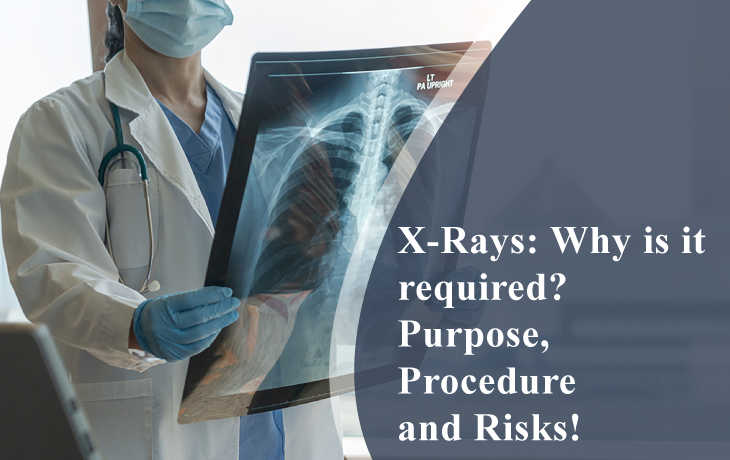An X-ray is a quick, painless examination to produce images of the structures inside your body. The methodology has been utilized by practitioners for decades particularly to see the functioning of the bones.
The wonderful side of this evaluation is that it ditches any sort of incision. It helps your treating doctor to diagnose, monitor, as well as treat several medical conditions.
Several types of X-rays are employed for a wide number of purposes. For instance, your doctor may ask you to get a mammogram done to examine the functioning of the breasts.
Similarly, they may recommend an X-ray with a barium enema to verify your gastrointestinal tract. Based on the inputs received from the imaging, the treating doctor will decide on further action.

Why Is an X-Ray Typically Performed?
There might be several reasons your treating doctor may order an X-ray. Some of the common ones are:
• To have a closer look at the area where you are experiencing pain or discomfort
• Evaluate the progression of an already diagnosed disease such as osteoporosis-for example
• They may ask you to get this done with the aim to verify how well is the prescribed treatment going on.
Some conditions that may essentially call for an X-ray include:
- Bone Cancer
X-rays have the potency to reveal bone tumors - Fractures and Infections
Any kind of fractures and infections in bones and teeth are likely to show up easily on X-rays. - Development of Arthritis
When experiencing ongoing pain and stiffness, they can be possible signs of arthritis. The modality of X-rays can emerge as a savior to help determine its existence. - Dental Decay
More than ever, dentists are utilizing the hack of using X-rays to check for cavities in teeth. - Osteoporosis
To measure bone density, special types of X-rays are employed. - Enlarged Heart
It is worth mentioning here that any sign of congestive heart failure will easily reflect on X-rays - Lung Infections or Conditions
Any evidence of pneumonia, tuberculosis or lung cancer can be readily determined with the aid of X-rays.
Above were only a few conditions that make use of X-rays. In actuality, the methodology is relied on heavily for verifying the development of a host of other issues.
How Should You Prepare for an X-Ray?
X-rays are standard procedures and thus you won’t be required to implement special steps to prepare for them. The only thing you need to keep in mind is that on the day of the evaluation consider wearing loose clothing. This will allow you to easily move around in giving you comfort.
If required, you may also be asked to change into a hospital gown for the examination. Additionally, the safest option is to keep your jewelry or any other metallic items at home. You will be asked to remove them at the imaging centre.
Moreover, the radiologist performing the examination must be enlightened about any kind of dental implant from prior surgeries.
These plants may play a deterrent and can possibly block the path of X-rays from passing through.
In some cases, you will also be asked to contrast material in the form of a dye before the X-ray. The fundamental motive behind this substance is to improve the overall quality of the images.
For examining the gastrointestinal tract, you may be asked to fast for a certain amount of time before the X-ray. To put it simply: you will need to essentially ditch consuming any kind of food material.
Plus, you may also have to limit the use of certain liquids under some conditions. The radiologist may also guide you to take some medications for clearing out the bowels.
How Is the Procedure Performed?
Once you land at the imaging centre, the radiologist will tell you how to position your body to generate clear images. Additionally, you will be asked to sit, stand or lie in several positions during the examination.
As you stand before or lie down on a specialized plate that essentially contains X-ray film or sensors, with the help of a camera several images are taken. During this time, you need to stay as still as you can to obtain the clearest pictures.
Are There Any Side Effects of an X-Ray?
Many people are under this apprehension or stuffed with the misconception that radiation exposure can cause cell mutations and lead to cancer. However, it is a complete fallacy.
X-rays use small amounts of radiation to generate images of the insides of the body. Therefore, experiencing any side effects doesn’t even come into the picture.
However, if you are pregnant, it is advisable to share this information with the radiologist. While the risk of most diagnostic X-rays to an unborn baby is rare, your doctor may recommend another imaging test such as an ultrasound.
Which Imaging Centre to Trust for All Your Imaging Needs?
For accomplishing all of your imaging needs in Canada, our varied diagnostic centres get you covered. Believe us; you will have a scintillating experience after connecting with the team of professionals.
To book an appointment with us, all you need to do is take a picture of your requisition and text it to 647-490-8991. You can also call us at 905-279-1144.
And if you have some questions regarding our services, simply go through the testimonials of our customers.

